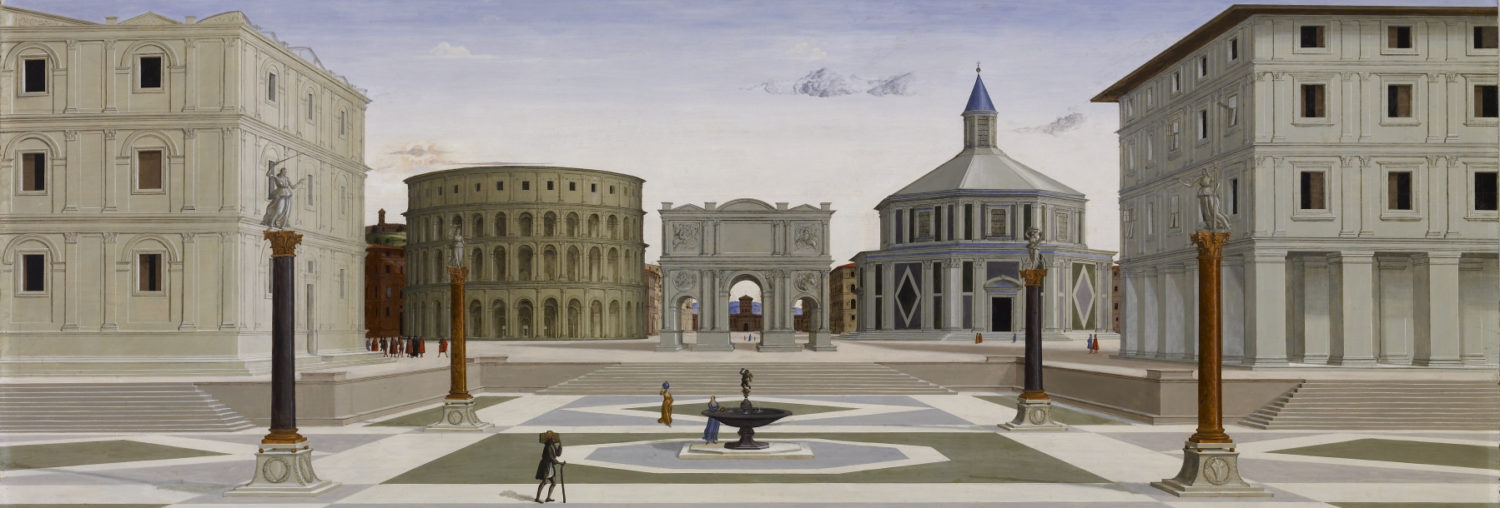This engraving of the year 1890, by Morphart, represents the city of Bucharest. The capital of Romania is located in the fertile plain of Valaquia, southern part of the country, on the banks of the rivers Dâmbovia and Colentin. The image shows the state in which some of the buildings were conserved around the year 1890, many of them of French and medieval style. In the picture it is described with many details the way of life at that time.
Bucharest is one of the most famous historical cities in Romania for its history, its culture, the places, the river and the gardens that it hides. It is known as the Paris of the Balkans, a city that, for various warlike reasons and different natural disasters referred mainly to several earthquakes and fires during the eighteenth and nineteenth centuries, has had to be reinvented and rebuilt. In this image, we can appreciate a highly rural space. Actually, in the 19th century Bucharest was a large village with a type of housing dense and nucleated, characterized by a lot of clustered buildings and a crowded population. As I mentioned before, it had an irregular layout with very narrow and small streets, as well as buildings of varied sizes and shapes.
Regarding the urban structure, we can find in the right part of the image the old quarter; around that one there are different houses and finally, we can see the outskirts. Among the most important urban spaces and elements, we can highlight a part of the city wall for defense and taxes. In the 19th and 20th centuries the city walls were been demolished and substituted by a ring-road. Thanks to this expansion, large boulevards lined with trees and flowers, large parks and open spaces were constructed. Some of the most important buildings to be appreciated in the picture are the Romanian Athenaeum, the CEC Palace, the University, the Redu Voda Monastery and the Old Court. This one was rebuilt as one of the most important monuments in the city, and was located in the middle of a neighborhood full of merchants and artisans. Also, the Palace of Justice, the Town Hall and the Old Parliament, built in 1900, are relevant monuments. Some of the most outstanding churches are Stravropoleos, from the 18th century, and the Cathedral, from the 17th century. In addition, outside the limits of the city we can find the old monasteries of Snagcov, Cernica, Pasarea, Caldarusani and Tiganesti.
In Bucharest, as well as throughout the Romanian region, the majority population consisted of day laborers who, in the 19th century, were in precarious conditions due to the loss of land due to natural disasters. Agriculture was and is an economically relevant sector and was very important in the nineteenth century when Romania was the main barn of Central and Western Europe, being the cereals the essential product of its agriculture.
This city has always benefited from its strategic position on the main transcontinental trade routes. Many of the goods from Europe were transported from Bucharest and shipped to different Danube river ports to be shipped to other points in the Balkans or to Asia. Since the 14th century different trade fairs with products from all over the world were celebrated. All this was sold in the caravanserai, constructions created by the princeps, by the nobility, by rich merchants or even by monasteries as a means of sustenance. The first caravanserai of Bucharest was built in 1669 and a century and a half later, in Bucharest there were more than 40 caravanserais of all kinds, the largest of which, was next to the Old Court. However, from the mid-nineteenth century they began to be replaced by stable weekly markets.
The population of Bucharest has been very varied over time. At the end of the 18th century there were about 30,000 inhabitants, doubling its population in only 40 years, in 1877 reaches 177,000. Unfortunately, during World War II and the dictatorship of Nicolae Ceausescu, the city lost part of its charm and its most important constructions; although fortunately, many of its green areas were conserved, reason why Bucharest can be considered a garden city.
As additional information, after comparing this image of Bucharest in the year 1890 with others in the same space and time, we did not find remarkable differences. In contrast, if the comparison is made with current images, we can appreciate a much more built city. We can appreciate a clear and drastic evolution and expansion from the nineteenth century to our days, moving from a rural space to an urbanistic space. Since the fifteenth century, Bucharest has undergone many changes. Moreover, until the 20th century, it was a very rural and medieval space, but after the Romanian Revolution it prospered until becoming a very important city, being the capital and most populated city of Romania, as well as its main industrial, commercial center and cultural. Nowadays, Bucharest is the most prosperous city in Romania and one of the major industrial and transport centers in Eastern Europe. Regarding the images of this decade it is not possible to appreciate Bucharest in its entirety since the engravings are usually centered on a specific part of the city or on specific monuments.
Sandra Úbeda Otero

